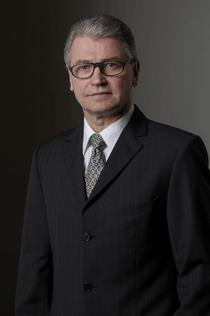Plastics extrusion: At battenfeld-cincinnati, merger’s concrete benefits take shape rapidly
In a recent meeting in his office in Bad Oeynhausen, Germany, Jürgen Arnold, CEO of the newly formed battenfeld-cincinnati, spent time with MPW to provide an update on the changes his company has made, offered an outlook at the current and coming market situation, and, most important, addressed why he believes his company's recent changes are sure to help his company's customers.
June 1, 2010
In a recent meeting in his office in Bad Oeynhausen, Germany, Jürgen Arnold, CEO of the newly formed battenfeld-cincinnati, spent time with MPW to provide an update on the changes his company has made, offered an outlook at the current and coming market situation, and, most important, addressed why he believes his company's recent changes are sure to help his company's customers.
Early in April, Arnold officially announced the merger of Battenfeld Extrusionstechnik (BEX; Bad Oeynhausen, Germany), Cincinnati Extrusion (Vienna, Austria), and B+C Extrusion Systems (Foshan, China) Ltd. Instead of operating as independent entities of holding company BC Extrusion Holding, the companies united under the new brand, battenfeld-cincinnati, effective April 9. The newly combined business also include U.S.-based extruder supplier American Maplan Corp.
But of course such change doesn't happen overnight, and in this case Arnold says it began to take solid shape last year. "We as management last September developed the new strategy, and presented it to our ownership at Triton (Ed.: The equity investment group that acquired the companies in early 2007). Triton approved it and we began to implement changes." Letters were written to every customer, and key accounts were met with personally. Multiple employee meetings followed. The company in early May of this year met with key suppliers to make clear it intends to grow and needs suppliers who can serve that growth. "Following our successful merger of the Battenfeld and Cincinnati Extrusion brands, we now are looking at all of our products from the two product lines to determine which ones are market leading. We'll search out the best in our entire portfolio and then share this technology across the company," added Arnold.
|
battenfeld-cincinnati's Jürgen Arnold |
BEX and Cincinnati Extrusion were among the biggest benefactors of the surge in demand for pipe and profile extrusion machinery in the early years of this decade, but saw sales drop by about half between 2007 and 2009. Hard decisions followed, including a substantial reduction in headcount in 2008. Arnold insists the new structure is not designed to streamline personnel, but rather streamline the company's ability to serve customers. "We're set up now to be profitable, also in this year," he added.
Part of the new structure involved dividing the company into three market-oriented business units: construction, infrastructure and packaging. Many of the company's customers already have such a structure, he noted, and said the new business units will be better able to serve them.
One concrete benefit of the merged operations has been a much more accurate assessment of the world's extrusion market, he said. The company manufacturers lines for pipe and profile extrusion, with its strengths especially in processing of PVC and polyethylene, and also makes and markets lines for sheet extrusion for packaging applications. Following the merger, he said, the company's leadership now has a much better grasp of which projects are open for bidding, which machinery suppliers are fighting for the work, the pricing and other strategies of those companies, and also can better do after-action reviews on each project, won or lost, to prepare itself better for bidding on the next job.
For customers, this centralized store of information means that the company cannot only offer them machinery and processing expertise but also significantly more market intelligence. Even though the separate business units had always worked closely together, there was still plenty of room for more synergies, said Arnold, and those now are being realized. "Now we know much more about the market than before...we can offer customers more technology, more market intelligence, a globally active service network and global production," he explained. "Plus for us it ensures we can stay competitive and can remain a top-quality supplier."
Arnold, almost 57 years old, began his career at Bayer in its PBT business unit, and then spent many years with the former GE Plastics (now Sabic Innovative Plastics), leaving there as its head of German operations. Two of his four children have already followed him into the industry, one at a processor and one holding down the same job at Sabic IP's Bergen op Zoom, The Netherlands' site that his father once did. After his stint at GE Plastics, Arnold had executive positions at an industrial gas supplier and at pump supplier Sterling SIHI before taking the helm at battenfeld-cincinnati in July 2009.
Growth opportunities aplenty
Looking around the world, Arnold said he still sees plenty of growth opportunities for processors of pipe, profile and sheet. "We see solid market growth in for example the Middle East, India and China, and have high hopes that Russia too will resume its growth...In China we're seeing lots of young businesspeople trying to get companies off the ground. Chinaplas (Ed.: the April 2010 tradeshow) proved very positive for us."
Through 2050, another 2.5 billion people will be born, he noted, most of them in Africa and Asia, and all of them will need suitable housing, a water supply, reliable sewage systems and packaging. "We're happy to be involved in an industry of the future. 'Water' is a strong focus," he emphasized.
Closer to home, Europe isn't a growth market but processors there have very high demands; energy savings for example are a big issue among them so it remains a very interesting and important market. North America is currently very quiet "but we expect to remain successful there, especially with our new business structure," he said. —Matt Defosse
About the Author(s)
You May Also Like



